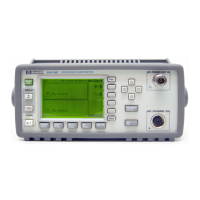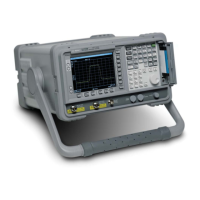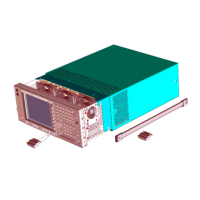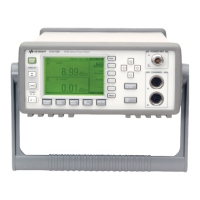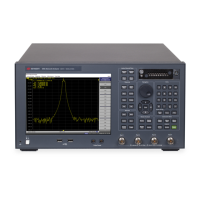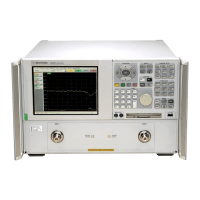120 Chapter 4
Calibration
Full 2-Port Calibration
calibration coefficient (pressing Done).
Step 7. Press Reflection.
Step 8. Connect an OPEN calibration standard to test port x (the connector to which the DUT is to
be connected) selected in
Step 6.
Step 9. Press Port x Open to start the calibration measurement (x denotes the test port to which the
standard is connected).
Step 10. Disconnect the OPEN calibration standard that was connected in Step 8 and replace it with
a SHORT calibration standard.
Step 11. Press Port x Short to start the calibration measurement (x denotes the test port to which the
standard is connected).
Step 12. Disconnect the SHORT calibration standard that was connected in Step 10 and replace it
with a LOAD standard.
Step 13. Press Port x Load to start the calibration measurement (x denotes the test port to which the
standard is connected).
Step 14. Repeat Step 8 to Step 13 for port y.
Step 15. Press Return.
Step 16. Press Transmission.
Step 17. Make a THRU connection between ports x and y (between the connectors to which the
DUT is to be connected) selected in
Step 6.
Step 18. Press Port x-y Thru to start the calibration measurement (x and y denote the test ports
between which the THRU connection is being made).
Step 19. Press Return.
Step 20. If an isolation calibration must be performed using a LOAD standard, follow the procedure
below.
a. Press Isolation (Optional).
b. Connect a LOAD standard to each of the two test ports (connectors to which the DUT
is to be connected) selected in
Step 6.
c. Press Port x-y Isol to start the calibration measurement (x and y denote the port
numbers to which the LOAD standard is connected).
Step 21. Press Return.
Step 22. Press Done to terminate the full 2-port calibration process. Upon pressing this key,
calibration coefficients will be calculated and saved. The error correction function will also
be automatically enabled.
